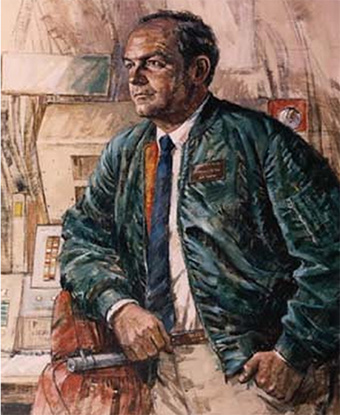Thomas C. Reed, the 11th Secretary of the Air Force and the first to have served in uniform in the Air Force uniform, died Feb. 11, at 89. He led the service under presidents Gerald Ford and Jimmy Carter, was head of the National Reconnaissance Office, and also served as a national security advisor to President Ronald Reagan.
Reed entered the Air Force in 1956 through the ROTC at Cornell University, N.Y., where he was first in his academic class—receiving a bachelor’s in mechanical engineering—and commander of the cadet corps.
On Active-duty, he was the project officer for the Minuteman Re-Entry Vehicle System. After earning a master’s in electrical engineering from the University of Southern California, he worked on thermonuclear weapon physics at the Lawrence Radiation Laboratory, first in uniform and then as a civilian, and was a consultant there until 1967.
In 1962, he formed the Supercon, Ltd. company, which produced superconducting alloys. Soon after, while still with Supercon, he formed Quaker Hill Development Corp., a real estate firm in California and Colorado.
Reed managed Ronald Reagan’s second successful campaign for governor of California and was a senior member of Richard Nixon’s re-election campaign.
In 1973, he was appointed assistant to Secretary of Defense James Schlesinger, recruiting talent for the DOD and troubleshooting procurement issues. Soon after, he was named head of Telecommunications and Command and Control Systems for the Defense Department in 1974.
Nominated by Ford, Reed became the 11th Secretary of the Air Force on Jan. 2, 1976, and served in that role—in which he was also the director of the NRO—for 15 months, departing April 6, 1977, at the beginning of the Carter presidency.
As Secretary, Reed worked to keep the multinational F-16 program on track and deflected budgetary efforts to derail the F-15 and A-10 fighter programs. He said he saw much of his job as keeping programs alive during the budget austerity following the Vietnam War. During his tenure, the Air Force experimented with the first stealth aircraft.
Reed served as a member of the Defense Science Board from 1977 to 1983 and as a member of the Strategic Air Command’s scientific advisory group from 1981-1983.
With the election of Ronald Reagan in 1980, Reed was appointed to the newly-created Commission on Strategic Forces, which recommended renewed investment in the strategic forces, to include the M-X—later “Peacekeeper”—missile and endorsed continuing the B-1 bomber program. Reagan also appointed Reed as his Special Assistant for National Security Affairs, but he resigned the post in March 1983 when he became the subject of an investigation into insider trading. He was found not guilty in a 1985 trial resulting from that investigation.
He returned to his business interests, developing a ski resort in Colorado and a successful winery in Sonoma, Calif., but continued in various national security advisory positions. In the 1990s, after the collapse of the Soviet Union, Reed played a role in returning nuclear weapons in Ukraine to Russia—a move that has sparked renewed debate after Russia’s invasion of Ukraine.
Reed was also a prolific and eclectic author.
In the early 2000s, Reed wrote “At the Abyss: An Insider’s History of the Cold War, which recounted his involvement with nuclear weapons at Livermore up through his advisory time at the Reagan White House. A second book, “The Nuclear Express: A Political History of the Bomb and its Proliferation,”co-authored with Danny Stillman, technical intelligence chief at the Los Alamos National Laboratory, contended that China deliberately spread nuclear weapons technology to third-world countries in the 1980s. Reed also wrote a spy thriller, released in 2012, titled “The Tehran Triangle,” about Iranian nuclear terrorism.
